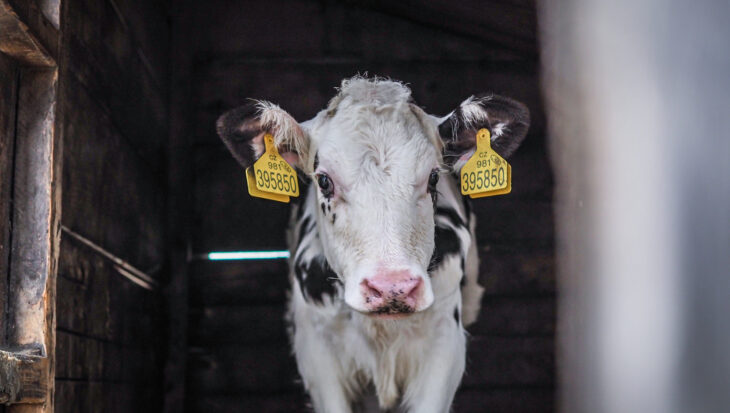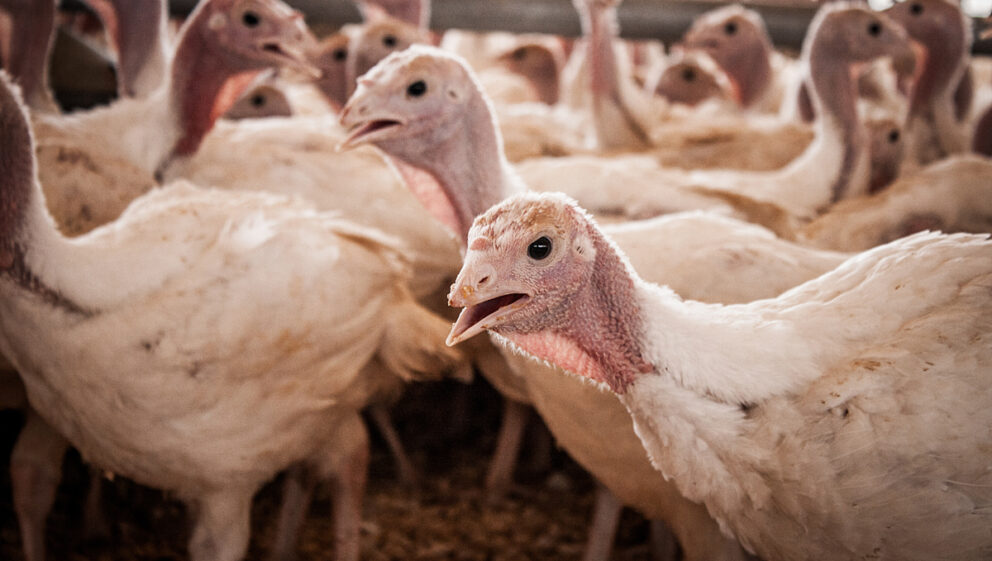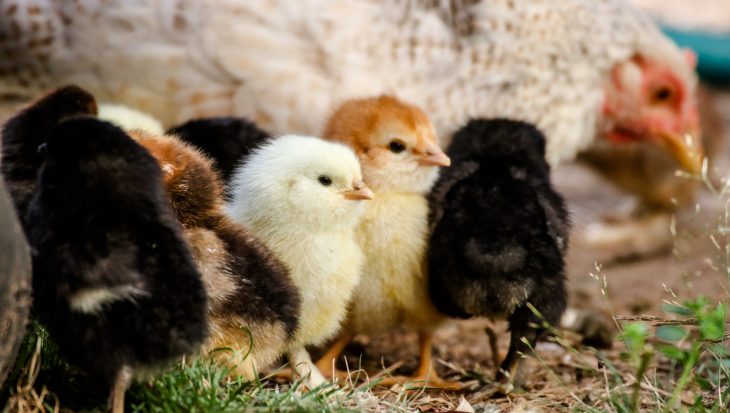To change the lived reality of millions of farmed animals, we must first face that reality head on – however scary it may be.
This Halloween, we’re rummaging around the “Night at the Museum” collection to see which of these weird implements should be consigned to the history books forever (spoiler: it’s all of them!)
Hint: the animals in the photos might be a clue
Exhibit a.
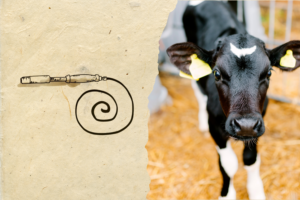
Answer: This device is a ‘Gas Type Dehorner’ and is used to dehorn cattle.
Dehorning is a ghastly and incredibly painful procedure – but totally legal. This implement is used on calves whose ‘buds’ have not yet developed into horns, using heat to kill off the sensitive tissue and permanently prevent growth. This is hugely stressful for individuals and comes with the risk of chronic pain and infection from open wounds.
Exhibit b.
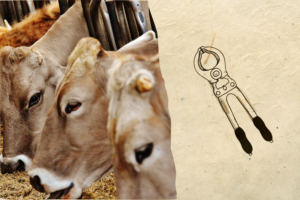
Answer: These are ‘Cutting Blades’ used to remove a cow’s horns.
Cows naturally evolved to develop horns, but the farming industry considers them an inconvenience. Once horns have already developed (and can no longer be burned off using exhibit a) the standard, legal practice is to saw them off with cutting wire or shears – it’s as horrifying and as painful as it sounds, but totally legal in the UK.
Exhibit c.
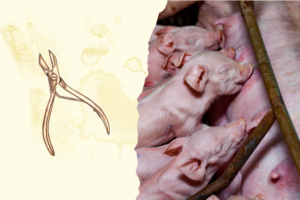
Answer: These are ‘Teeth Clippers’, most commonly used on pre-weaned piglets.
Pigs are having 50% larger litters than they were in 1990. This increases piglets’ demand for access to their mother’s teats or the warmth of a heat lamp and can lead to aggression when there simply isn’t enough to go around. The industry could opt to produce smaller litters but instead mutilates these innocent babies, clipping their teeth and tails to prevent them biting each other and, sometimes, even cannibalism.
Exhibit d.
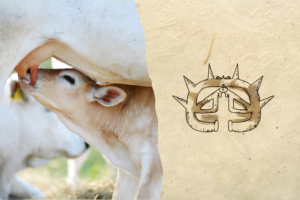
Answer: This is an ‘anti-suckling device’. It is fitted to a calf’s nose to prevent them from accessing their mother’s udders.
Why, you ask? Young calves have an innate need to suckle, which would mean less milk for humans. The spikes are designed to deliberately hurt the mother, encouraging her to reject and kick the calf away when they try to suckle. These calves become extremely frustrated and confused when they cannot suckle, but the dairy industry claims this is a kinder alternative to separating the cow and calf.
Exhibit e.
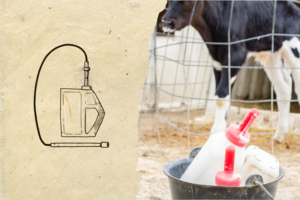
Answer: This is a ‘Rigid Drencher’ used to feed calves once they’ve been separated from their mother.
Typically, calves are removed from their mothers (just hours after birth) so that mum’s milk can be taken for human consumption instead. The calves are then fed using a device like this ‘rigid drencher’. This device has a tube for inserting into the calves’ stomach in cases where these young animals are too confused or weak to suckle. This highly unnatural way of feeding calves could be avoided entirely by ditching dairy.
Exhibit f.
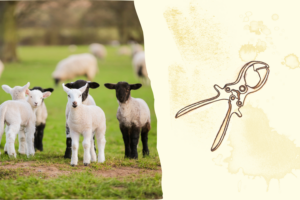
Answer: This a Castration tool used to remove the testicles of young animals.
Some farmed animals are used to breed the next generation, but most are born and reared simply to be slaughtered for food. In fact, most of them are still babies themselves when they go to slaughter. Despite never reaching sexual maturity, the industry still castrates animals because it encourages weight gain and ‘better’ carcass quality – all that pain and suffering simply to make more money.
Exhibit g.
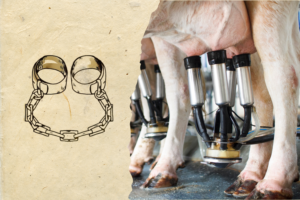
Answer: These ‘cattle shackles’ are fitted to a cow’s back legs to keep them standing even when they are physically exhausted, injured or sick.
The physical toll of continuous pregnancy, birthing and milking – plus slippery, concrete floors that are often wet with slurry – means cows can easily injure their legs, hips and hooves. Artificial selection also produces calves that are so big that the mothers need help giving birth. In the process, their nerves can be irreparably damaged, leaving cows unable to stand and doing the ‘splits’. Like something from the Victorian era, these shackles (also known as hobbles) ensure cows can continue walking to the milking parlour – and, crucially, making money.
Exhibit h.
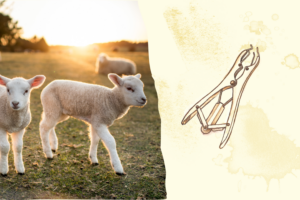
Answer: This device is a ‘Livestock Tail Docker’. It is used to remove the tails of young animals, most commonly lambs.
An elastic band is fitted between the spokes at the end of the tool, which snaps closed around the upper part of a lamb’s tail. In 3-4 weeks, once blood supply has been lost, the tail will wither and drop off.
The industry claims that tail docking is the only practical way to manage fly infestations (known as ‘fly strike’ or ‘blow fly’) which gather around a sheep’s bottom – and yet, wild populations of sheep have survived centuries without this painful mutilation. Crucially, most lambs have their tails docked when they are less than 7 days old – at this age, there is no legal requirement to use anaesthetic, despite the risk of infection, blood loss, and such chronic pain that lambs may stop feeding.
Exhibit i.
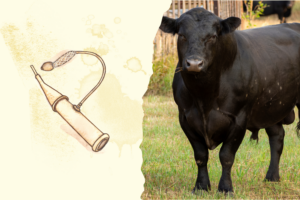
Answer: This device is used to collect semen from a male animal, typically a bull.
Most farmed animals are bred via artificial insemination, giving the industry greater control over selecting individuals who are bigger, stronger, and more profitable – but no matter how you dress it up, collecting sperm is an unnatural and disturbing practice.
Exhibit j.
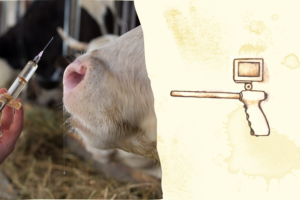
Answer: This device is an ‘Endoscope Sperm Gun’ or ‘Artificial Inseminator’.
All species, from cows and pigs to sheep and turkeys, will have a device, similar to this one, inserted into them in order to reproduce – it is frightening, stressful, and likely painful for them. A female cow in the dairy industry, for example, can expect to be artificially inseminated again just 45 days after giving birth to a calf – a cycle that repeats year on year, until she is slaughtered at around 5 years old.
Exhibit k.
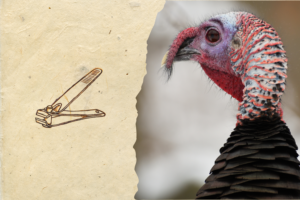
Answer: Believe it or not, these nail clippers are used to remove a turkey’s floppy, fleshy appendage known as a ‘snood’.
A turkey’s snood is a wondrous feature, with its dramatic colour changes indicating an individual’s mood. Sadly, the conditions in which turkeys are farmed result in frustration and aggression and, with nowhere to escape, their snoods can quickly become injured, bloodied or even torn off by other dominant turkeys. To stop this happening, the industry cuts off the snood – this is a frightening, painful procedure that also strips the turkey of their identity.
The mutilation of farmed animals might be the scariest thing you read about this Halloween, but for millions of individuals, this suffering is an everyday occurrence. Please take action by making the switch to a kinder, cruelty-free and plant-based diet:
